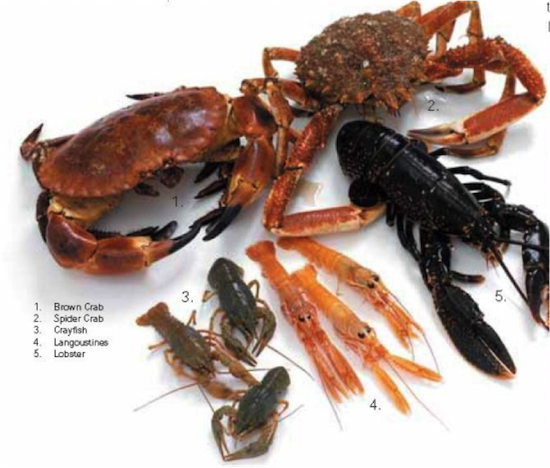
Crustacea Notes

Crustaceans form a very large group of arthropods, usually treated as a subphylum, which includes such familiar animals as crabs, lobsters, crayfish, shrimp, krill and barnacles. The 67,000 described species range in size from 0.1 mm, to 3.8 m and a mass of 20 kg. Like other arthropods, crustaceans have an exoskeleton, which they moult to grow. They are distinguished from other groups of arthropods, such as the insects, by the possession of two-parted limbs, and by the larvae.
The majority of crustaceans are aquatic, living in either marine or freshwater environments, but a few groups have adapted to life on land, such as terrestrial crabs, terrestrial hermit crabs, and woodlice. Marine crustaceans are as ubiquitous in the oceans as insects are on land. The majority of crustaceans are also motile, moving about independently, although a few are parasitic and live attached to their hosts, and adult barnacles live a sessile life—they are attached headfirst to the substrate and cannot move independently. Krill are the bottom layer and the most important part of the food chain in Antarctic animal communities.
Crustaceans have a rich and extensive fossil record, which began with animals such as Canadaspis and Perspicaris from the Middle Cambrian age. Most of the major groups of crustaceans then appear before the end of the Cambrian. Prawns and polychelids appeared in the Triassic, and shrimp and crabs appeared in the Jurassic, however, the great radiation of crustaceans, including the first true lobsters, occurred in the Cretaceous, particularly in crabs, and these may have been driven by the adaptive radiation of their main predators, bony fish.